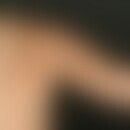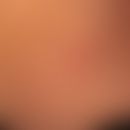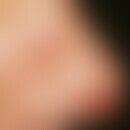Synonym(s)
Allan dent-disease; Arginic Succinic Acid Bullshit; Arginine Succinaturia; argininosuccinic aciduria; Argininosuccino aciduria; ASA deficiency; ASL deficiency; OMIM 207900
HistoryThis section has been translated automatically.
Allen, 1958
DefinitionThis section has been translated automatically.
Rare, autosomal-recessive inherited metabolic disorder of the urea cycle caused by arginine succinate lyase deficiency with pathological manifestations in the nervous system, hair (often trichorrhexis nodosa) and liver.
You might also be interested in
Occurrence/EpidemiologyThis section has been translated automatically.
The incidence is 1:70,000.
EtiopathogenesisThis section has been translated automatically.
Autosomal recessive mutations of the argininosuccinate lyase gene (ASL gene; gene locus 7cen-q11.2) with consecutive metabolic disorder of the urea cycle, which leads to accumulation of arginic succinic acid in plasma and urine and to hyperammonemia in case of arginine succinate lyase deficiency.
ManifestationThis section has been translated automatically.
Usually from birth.
ClinicThis section has been translated automatically.
Brittle, brittle, dull, difficult to style hair, especially at the back of the head; delayed hair growth. Neurological symptoms: spasms, ataxia, retardation of mental development; liver involvement. There are three different clinical forms after initial manifestation:
- Neonatal form: Beginning in the first days of life; increasing apathy, weakness in drinking, muscular hypotension and cramps. Prognosis: Without therapy lethal.
- Infantile form: Beginning in the 1st year of life; episodes of recurrent vomiting, tremor and seizures up to coma; usually leads to physical and mental retardation.
- Chronic form: Beginning after the 1st year of life; the children are only noticed by the delay in development; frequent are seizures, intermittent ataxia and lethargy caused by protein intake or infections. However, these patients can also develop normally on a protein-reduced diet. Marked arginine succinatemia, depending on the protein intake also hyperammonemia, citrullinemia.
HistologyThis section has been translated automatically.
Trichorrhexis nodosa, circumscribed, bristle-brush-like splits of the hair cuticle.
DiagnosisThis section has been translated automatically.
Detection of arginic succinic acid in urine by paper chromatography.
Differential diagnosisThis section has been translated automatically.
Trichorrhexis nodosa; Kinky hair disease; Monilethrix syndrome.
TherapyThis section has been translated automatically.
Restriction of protein intake. Substitution of arginine (e.g. 1 M L-arginine hydrochloride solution Pfrimmer) 3 mmol/kg bw/day. Immediate symptomatic therapy of hyperammonemia; long-term therapy with low-protein diet and arginine substitution (possibly citrate administration in case of elevated citrulline levels!) Prenatal diagnosis from amniotic cells and chorionic biopsy possible.
LiteratureThis section has been translated automatically.
- Allan JD, Cusworth DC, Dent CE, Wilson UK (1958) Disease, probably hereditary, characterized by severe mental deficiency and constant gross abnormality of amino acid metabolism. Lancet I: 182-187
- Gieselmann V (2003) Metachromatic leukodystrophy: recent research developments. J Child Neurol 18: 591-594
- Kleijer WJ et al (2002 Clinical, enzymatic, and molecular genetic characterization of a biochemical variant type of argininosuccinic aciduria: prenatal and postnatal diagnosis in five unrelated families. J Inherit Metab Dis 25: 399-410
- Linnebank M et al (2002) Argininosuccinate lyase (ASL) deficiency: mutation analysis in 27 patients and a completed structure of the human ASL gene. Hum Genet 111: 350-359
Incoming links (6)
Allan dent-disease; Arginic succinic acid bullshit; Arginine succinaturia; Argininosuccino aciduria; Asa deficiency; Trichorrhexis nodosa;Disclaimer
Please ask your physician for a reliable diagnosis. This website is only meant as a reference.




